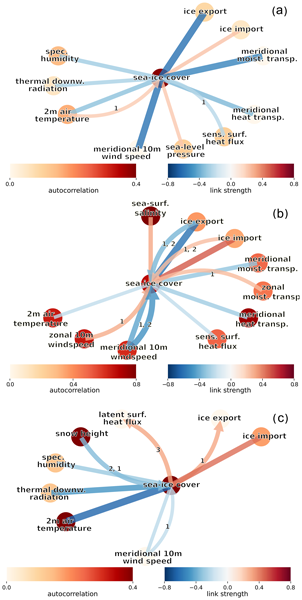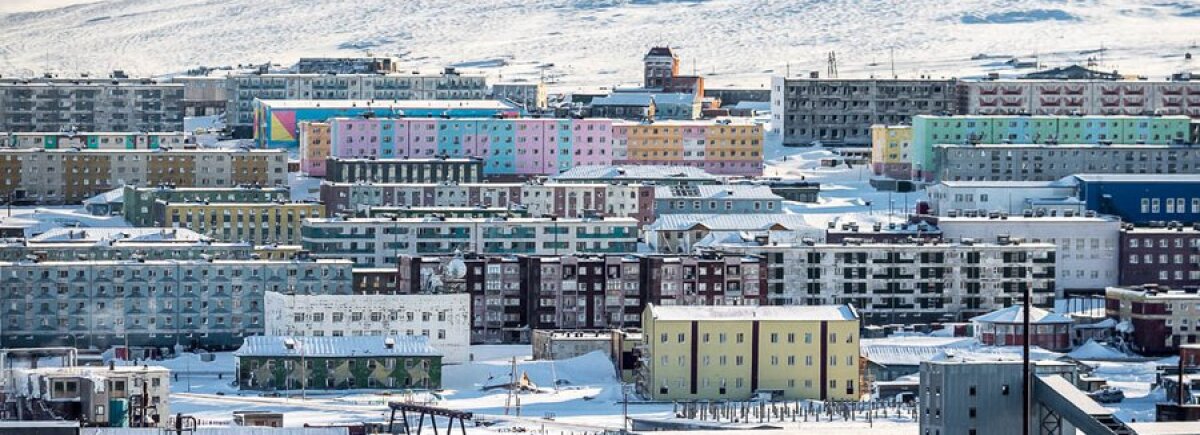Весеннее таяние морского льда в море Лаптевых в основном контролируется крупномасштабной атмосферной циркуляцией, опосредованной меридиональной скоростью ветра и выносом льда. Во время замерзания осенью важны термодинамические переменные и механизмы обратной связи - морской ледяной покров взаимосвязан с температурой воздуха, тепловым излучением и удельной влажностью. Хотя низкий ледяной покров приводит к усиленному переносу тепла и влаги на юг в течение лета, связи морского ледяного покрова с атмосферой над сушей являются слабыми, и как морской лед в море Лаптевых, так и атмосферные условия над прилегающими массивами суши в основном управляется обычными внешними причинами.
Analyzing links between simulated Laptev Sea sea ice and atmospheric conditions over adjoining landmasses using causal-effect networks
We investigate how sea ice interacts with the atmosphere over adjacent landmasses in the Laptev Sea region as a step towards a better understanding of the connection between sea ice and permafrost. We identify physical mechanisms as well as local and large-scale drivers of sea-ice cover with a focus on one region with highly variable sea-ice cover and high sea-ice productivity: the Laptev Sea region. We analyze the output of a coupled ocean–sea-ice–atmosphere–hydrological-discharge model with two statistical methods. With the recently developed causal-effect networks we identify temporal links between different variables, while we use composites of high- and low-sea-ice-cover years to reveal spatial patterns and mean changes in variables.
#
science #
climate #
sea #
Tiksi
